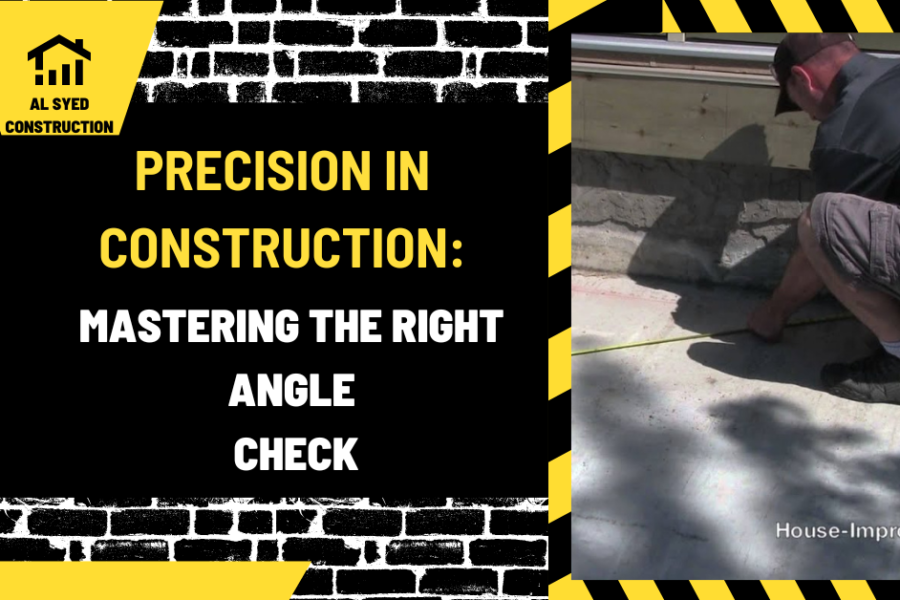Precision in Construction: Mastering the Right Angle Check
Ensuring right angles in construction is fundamental for achieving structural integrity, aesthetic harmony, and overall project success. This article provides a comprehensive guide on how to check right angles in construction, covering traditional and modern methods, tools, and best practices. Understanding these techniques is crucial for construction professionals aiming to uphold precision and quality in their work.
Table of Contents
The Importance of Right Angles in Construction
Right angles, or 90-degree angles, are a cornerstone of construction geometry, critical for creating perpendicular intersections between walls, floors, and other structural elements. Accurate right angles ensure stability, proper alignment, and a visually appealing finish. Any deviation from a true right angle can lead to structural weaknesses, misaligned components, and aesthetic flaws, highlighting the importance of precise angle measurement and verification in construction projects.
Traditional Methods for Checking Right Angles
One of the oldest and most reliable methods for checking right angles is the 3-4-5 triangle rule, based on the Pythagorean theorem. To use this method, measure 3 units along one line, 4 units along the perpendicular line, and the diagonal between these points should measure 5 units if the angle is correct. Carpenter’s squares or framing squares are also commonly used tools for checking right angles, especially in woodworking and framing applications.
Modern Tools and Techniques
Advancements in technology have introduced more sophisticated tools for checking right angles in construction. Laser levels project perfectly straight lines at 90-degree angles, providing a highly accurate reference for alignment. Digital angle finders and protractors offer precise measurements and can be especially useful in complex or large-scale projects. Using these modern tools can enhance accuracy and efficiency in construction tasks.
Best Practices for Ensuring Accurate Right Angles
To ensure accurate right angles in construction, it’s essential to follow best practices. Regularly calibrate and maintain your tools to prevent measurement errors. When using the 3-4-5 method, extend the measurements for larger triangles (e.g., 6-8-10) to increase accuracy. Double-check measurements from different points to confirm consistency, and always use quality tools that are suitable for the specific task at hand.
Conclusion
Checking right angles is a fundamental aspect of construction that requires attention to detail and precision. Whether using traditional methods like the 3-4-5 rule and carpenter’s squares or modern tools like laser levels and digital angle finders, it’s crucial to follow best practices and ensure that your tools are accurate and reliable. By mastering the art of checking right angles, construction professionals can achieve structural integrity, aesthetic excellence, and overall project success.




